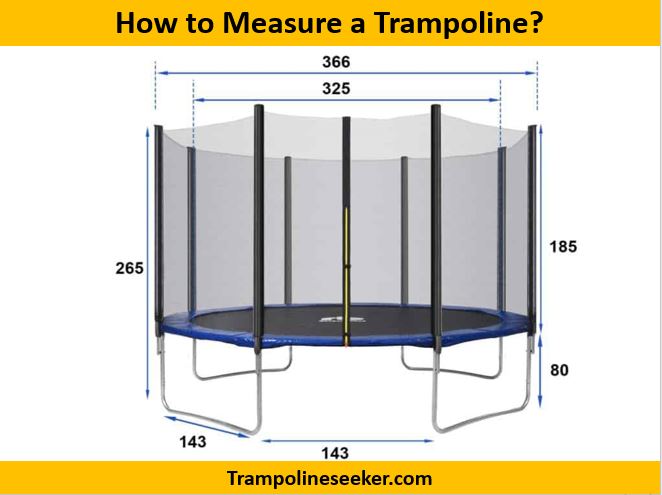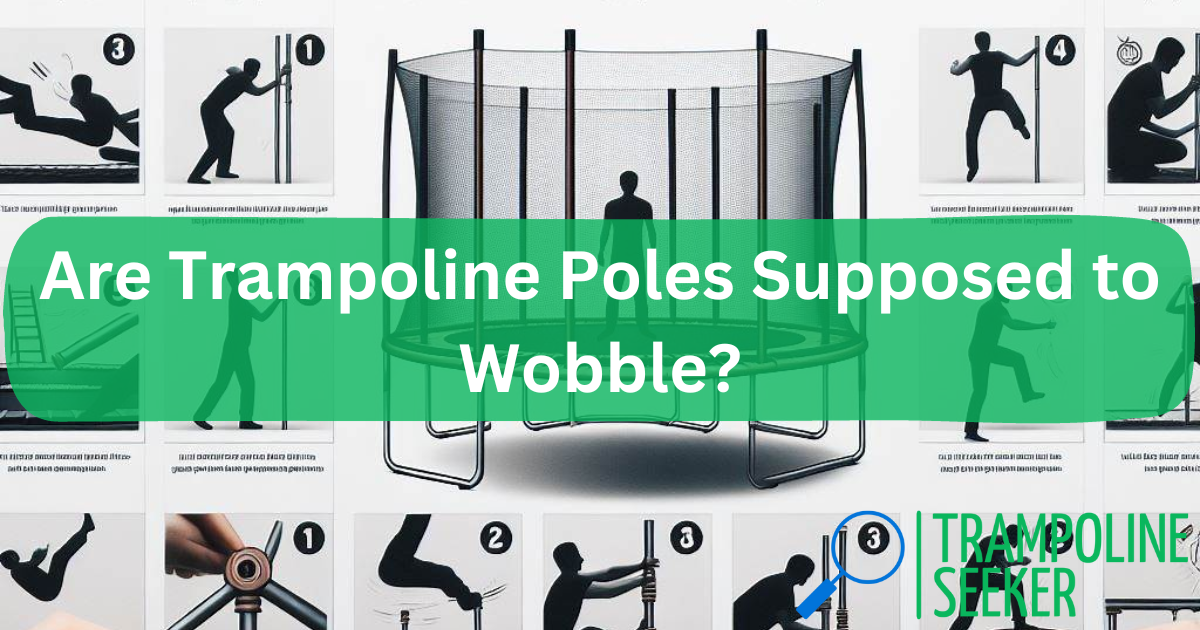As an fitness enthusiast, I was devastated when I started experiencing stabbing pains in my heel. After seeing a podiatrist, I was diagnosed with plantar fasciitis – inflammation of the thick band of tissue connecting the heel bone to the toes.
The pain was worst in the mornings and would subside as I moved around, only to return once I stopped being active. I was eager to find a way to relieve the pain and get back to my normal exercise routine. When a friend suggested trying rebounding on a trampoline, I was skeptical but decided to give it a try.
In this post, I’ll share my experience using a rebounder to help treat my plantar fasciitis. Whether you have plantar fasciitis or are just curious about using a trampoline for exercise, I hope you find this post helpful! 😊
What is Plantar Fasciitis?

Plantar fasciitis is one of the most common causes of heel pain. It affects the thick band of tissue (the plantar fascia) that runs across the bottom of your foot, connecting your heel bone to your toes.
This tissue supports the arch of your foot and helps absorb shock as your foot hits the ground. However, if it becomes damaged or inflamed, it can cause mild to severe heel pain.
😣 Some common symptoms include:
- Sharp, stabbing pain in the heel when taking the first steps in the morning or after long periods of sitting
- Pain that tends to decrease once you start moving around, but returns after long periods of standing or activity
- Pain and stiffness in the heel that gets worse over time if untreated
While the exact cause is unclear, factors that can increase your risk of developing plantar fasciitis include:
- Excessive foot pronation (inward rolling of the foot)
- Tight calf muscles
- Activities with repeated impact on the heel (like running on hard surfaces)
- Weight gain
- Poor footwear with inadequate arch support
If left untreated, the pain can become chronic and last for months or even years. So finding the right treatment is important for relieving symptoms and preventing long-term damage.
Can Trampolines Help Relieve Pain? 🤔

Using a rebounder or “mini trampoline” might seem like an odd treatment for plantar fasciitis pain. But there’s evidence it can be beneficial:
- The repetitive bouncing motion stretches and strengthens the feet and calf muscles.
- It improves alignment and posture, reducing strain on the plantar fascia.
- The increased blood flow aids recovery and healing.
- The low-impact nature places less stress on the feet versus high-impact activities.
- Doing calf raises and other foot exercises on the trampoline targets the affected tissues.
So while rebounding won’t cure plantar fasciitis on its own, it can be a helpful complement to other treatments, providing gentle strengthening and stretching.
Many people find it’s a fun, easy way to get exercise without aggravating their heel pain. But as with any new activity, it’s important to check with your doctor first and take it slow.
My Experience With Rebounding 👟

After reading about the potential benefits, I decided to give rebounding a try alongside the treatment plan from my podiatrist.
Getting Started
I purchased a high-quality rebounder designed for exercise, with a stabilized bar for balance. I also got some supportive footwear to wear while bouncing.
For the first week, I only bounced for 5-10 minutes at a time, just getting used to the motion. I focused on landing softly, mostly up on my forefeet, to avoid too much impact on my heels.
Slowly Increasing Duration
Over the next few weeks, I gradually increased my rebounding sessions to 15-20 minutes. I still wore supportive shoes and focused on being gentle, avoiding any jarring motions.
The trampoline provided a nice cardio workout that didn’t leave my feet throbbing like running did. The soreness and morning stiffness started improving.
Adding Targeted Exercises
After a month, I began incorporating some foot and leg exercises like calf raises, toe taps, and marching. I’d do a few reps of each between bouncing intervals.
These movements specifically targeted my plantar fascia and calf muscles. My podiatrist was pleased with my progress and comforted that the rebounding wasn’t causing any new pain.
Continued Improvements
I’m now up to 30 minutes of rebounding 3x a week, including the exercises. I’m also easing back into jogging. My heel pain has decreased substantially and I have much more mobility.
Rebounding was a game-changer for me. It provided gentle strengthening and got me moving again while respecting my limits and not flaring up my plantar fasciitis.
Tips for Rebounding With Plantar Fasciitis

If you want to try using a rebounder to help relieve your heel pain, here are some tips:
🔸 Always check with your doctor first to ensure it’s appropriate for your situation.
🔸 Start slowly – only bounce for 5-10 minutes at a time initially.
🔸 Wear shoes with good arch support and shock absorption. Orthotics may help too.
🔸 Focus on landing softly up on your forefeet rather than jarring down on your heels.
🔸 Avoid bouncing barefoot, as this can worsen pain.
🔸 Add exercises like calf raises gradually. Only do what’s comfortable.
🔸 Listen to your body and stop if a movement causes pain.
🔸 Consider using a balance bar at first while you build stability.
🔸 Stay hydrated and stretch your calf muscles after bouncing.
With patience and consistency, rebounding may help you bounce back from plantar fasciitis! But remember to consult your doctor regarding any exercise program.
Other Ways to Manage Pain 🤕

Along with rebounding, here are some other tips that helped me manage my plantar fasciitis:
- Wearing splints or orthotics to stretch the plantar fascia and support the arch
- Regular calf and foot stretching
- Soaking feet in warm Epsom salt baths
- Rolling a frozen water bottle under the arch for pain/inflammation
- Losing weight to reduce strain on the feet
- Avoiding going barefoot
- Applying ice packs after activity
- Taking OTC anti-inflammatories as needed
- Getting deep tissue massage on the calves and feet
Finding the right combination of treatments made a big difference for me. But always talk to your doctor to find the safest, most effective plan for your situation.
FAQ ❓
Here are answers to some common questions about using rebounding to help treat plantar fasciitis:
Can bouncing on a trampoline make plantar fasciitis worse?
For most people, rebounding is low-impact and unlikely to worsen pain as long as some precautions are taken – start slowly, wear supportive footwear, focus on landing softly, etc. But it’s always best to consult your doctor.
How often and how long should you rebound if you have plantar fasciitis?
Start with just 5-10 minutes of gentle bouncing 2-3x per week. Gradually increase the duration to work up to 20-30 minutes, 3-5 days a week. Listen to your body and avoid overdoing it.
Should you rebound barefoot with plantar fasciitis?
Bouncing barefoot is not recommended if you have plantar fasciitis, as it places more direct pressure on the heel. Wearing shoes with arch support helps reduce strain.
What rebounding exercises help strengthen feet and calves?
Some great options include calf raises, toe taps, marching in place, small side-to-side hops, and writing the alphabet with your feet. Go slowly and focus on good form.
Can rebounding cure plantar fasciitis?
While rebounding can definitely help manage symptoms, it’s unlikely to completely “cure” plantar fasciitis on its own. A combination of treatments is usually needed. But rebounding is a great addition to relieve pain.
Conclusion
Adding gentle rebounding to my treatment plan was instrumental in helping relieve my plantar fasciitis pain. It provided strengthening, stretching, and improved alignment without flaring up my symptoms.
Of course, it’s important to consult your doctor before trying new activities. But for many dealing with plantar fasciitis, rebounding can be a fun way to get moving again while respecting your limits. I hope these tips help you bounce back! 👣
Articles You May Like to Read:













